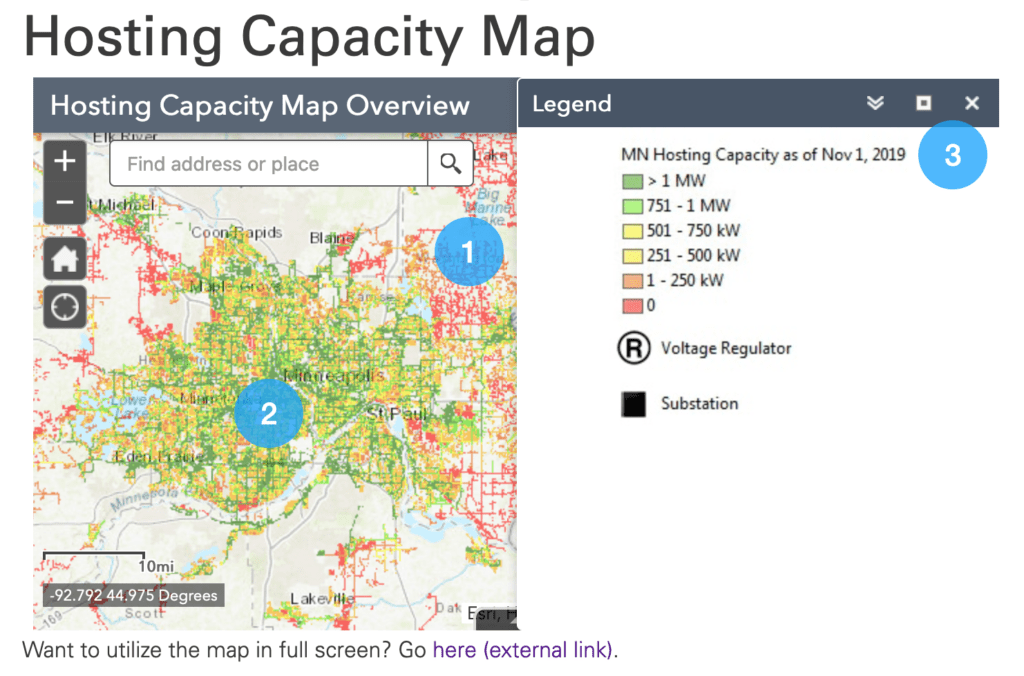Originally published at ILSR.org
Electricity customers are lining up to generate their own clean, affordable solar energy, but to get it to them, solar developers must navigate the impediments of a congested and outdated electricity grid.
For this episode of the Local Energy Rules podcast, host John Farrell speaks with Yochi Zakai, an attorney with Shute, Mahaly, and Weinberger representing Interstate Renewable Energy Council (IREC). The two discuss hosting capacity analysis and how publicly-shared grid information can help solar developers, electric customers, and others make informed decisions.
Listen to the full episode and explore more resources below — including a transcript and summary of the conversation.
Podcast (localenergyrules): Play in new window | Download | Embed
Subscribe: Apple Podcasts | Stitcher | RSSEpisode Transcript
Expensive Electric Accommodations
Electric distribution grids were built as top-down avenues for delivering electricity from large, centralized power plants. Now, as distributed generation and energy storage become more popular, utilities are having to accommodate the two-way flow of electricity. To do so, the utility often needs to upgrade the distribution system. This is especially true in areas where there is a lot of distributed energy development.
The grid was built for this one way flow of electricity. But as more customers decide to install generation in their homes, the way that the distribution grid operates is also going to change.Solar developers looking to connect their new generation source to the grid may trigger the need for a system upgrade. In most cases, whoever triggers a grid upgrade must pay the upgrade costs — which can be severe. Larger solar gardens are more likely to trigger upgrades. If a developer is surprised by these costs, and building their solar garden is no longer feasible, they may be forced to drop their plans entirely. Hosting capacity analysis can provide key grid information proactively for individuals hoping to plug in.
Hosting Capacity AnalysisIn a hosting capacity analysis, utilities compile information about the electric grid and publish it online for the use of developers and other stakeholders. The resulting map has pop-ups with data on various localized grid conditions: how much generating capacity that section of the grid can still handle, the voltage of the line, and the existing generation on that part of the grid.
This information, which Zakai calls “geeky grid data,” helps customers and solar developers make decisions.
The studies produce a wealth of information that developers can use to cite and design the systems so they don’t trigger upgrades. And in some cases they can even make the grid more reliable.Utilities in seven states are required to publish hosting capacity maps. Some utilities even publish this information voluntarily. Zakai says that generally, hosting capacity analysis is most common in states with robust distributed energy development, including Hawaii, Massachusetts, and New York.
 Image from Xcel Energy’s Hosting Capacity MapSome Truth to California Exceptionalism
Image from Xcel Energy’s Hosting Capacity MapSome Truth to California ExceptionalismCalifornia’s hosting capacity analysis process, called integration capacity analysis, provides more useful information than the hosting capacity maps published in other states. This is thanks, in part, to a petition from Zakai and the Interstate Renewable Energy Council (IREC). IREC asked the state of California to consider all kinds of interconnecting loads, including electric vehicle chargers, electric heat, and solar generating power, when implementing its integration capacity analysis. In January 2021, the California commission filed its petition to make changes to the analysis and its resulting map.
In California, grid users also uniquely share the cost of grid upgrades, rather than the typical ‘cost-causer pays’ model used in other states.
Automating and Simplifying the Interconnection ProcessIt is not possible to automate all new grid interconnections, says Zakai. Still, hosting capacity analysis could simplify many of the steps within this process. California is the first state in the country to try using hosting capacity analysis to reduce the complexity of the interconnection process.
Hosting capacity analysis can be used to automate and increase the precision of some of the most problematic technical review processes that the utilities use when they evaluate new grid connections. Last fall, California became the first state in the country to make a final decision to use the hosting capacity analysis to automate some of these processes.Thanks to new rules adopted by the California Public Utilities Commission, solar developers can use the public hosting capacity maps to design and site projects with more certainty. As developers make more informed proposals, utilities will not waste resources reviewing projects that will never get built.
Read ILSR’s comments to the Minnesota Public Utilities Commission detailing how Hosting Capacity Analysis Could Simplify Grid Interconnection for Distributed Energy Resources.
Episode Notes
See these resources for more behind the story:
- Check out IREC’s press release on California’s new hosting capacity rules.
- Read our report on the States of Distributed Solar.
For concrete examples of how cities can take action toward gaining more control over their clean energy future, explore ILSR’s Community Power Toolkit.
Explore local and state policies and programs that help advance clean energy goals across the country, using ILSR’s interactive Community Power Map.
This is episode 135 of Local Energy Rules, an ILSR podcast with Energy Democracy Director John Farrell, which shares powerful stories of successful local renewable energy and exposes the policy and practical barriers to its expansion.
Local Energy Rules is Produced by ILSR’s John Farrell and Maria McCoy. Audio engineering for this episode is by Drew Birschbach.
This article was originally posted at ilsr.org. For timely updates, follow John Farrell on Twitter, our energy work on Facebook, or sign up to get the Energy Democracy weekly update.

